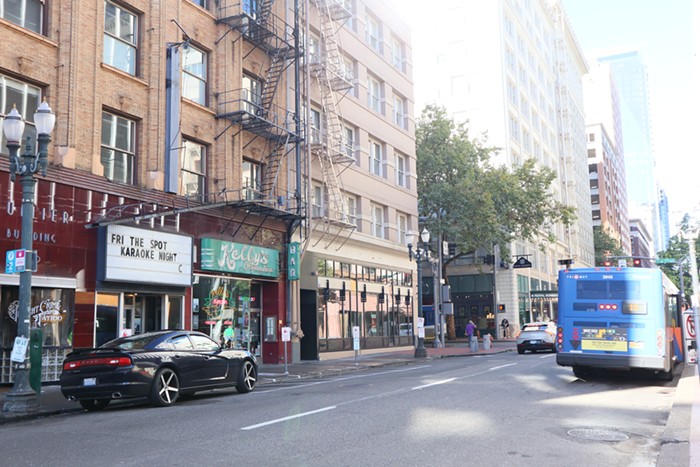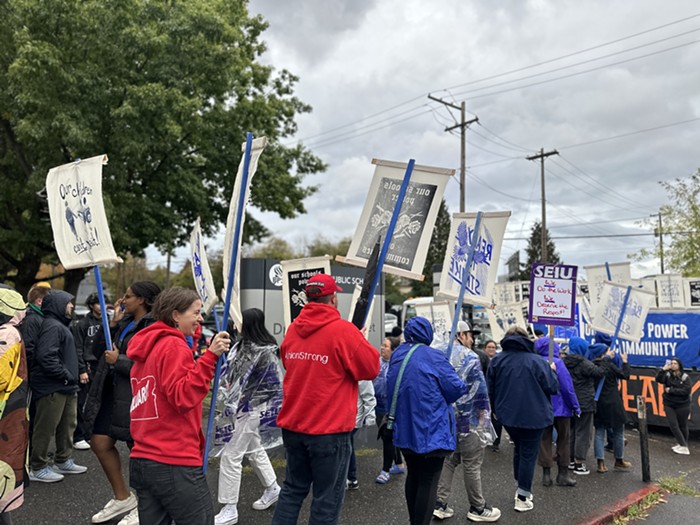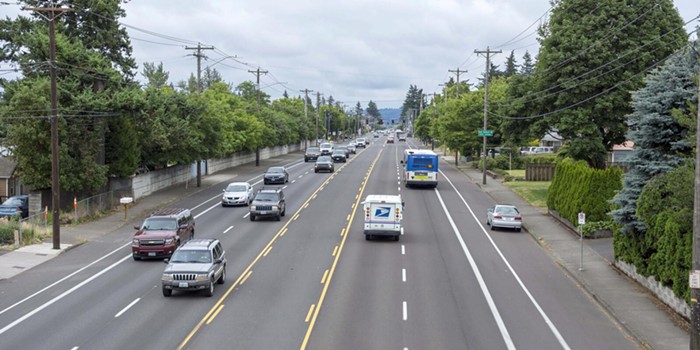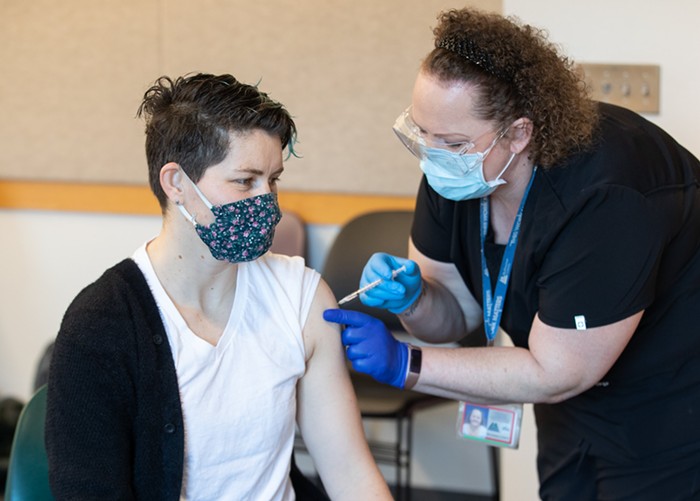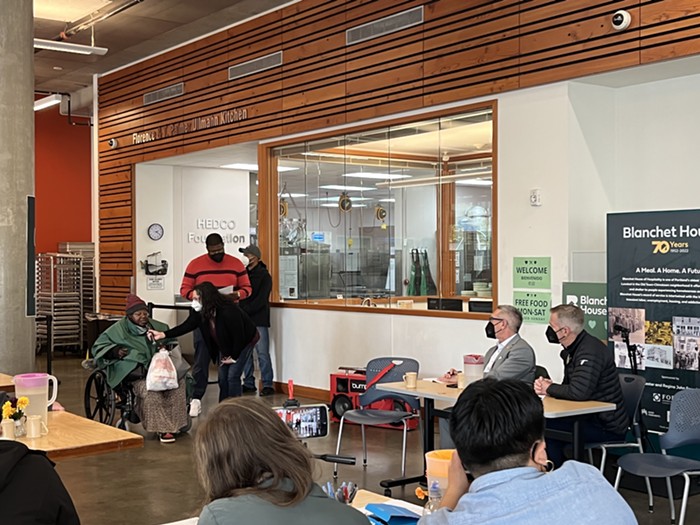
The Portland City Council unanimously voted Thursday to adopt the Rose Lane Project, a plan to add red bus-only lanes (and other transit-priority changes) to roads across the city.
Both city commissioners and members of the public at a Thursday council meeting focused on the plan’s promise to speed up bus service and make commuting more equitable and reliable for all Portlanders. But the conversation also showed where gaps in TriMet’s service plan, and the Portland Bureau of Transportation’s (PBOT) limited jurisdiction, could hamper the Rose Lanes’ potential.
The overarching aim of the Rose Lane Project is to make riding the bus more desirable and convenient, and help PBOT reach its goal of having 25 percent of all trips within the city taken by transit by 2035. Currently, that number is at 12 percent.
“On average, we need people to drive half as much as they do today,” said Commissioner Chloe Eudaly, who oversees PBOT, at Thursday’s meeting.
PBOT’s plan comprises at least 29 projects, with more to be identified soon, all of which should be finished over the next two years. The projects range from dedicated bus-only lanes to more targeted projects meant to quicken transit service, like new left-turn pockets and priority traffic signals for buses. PBOT estimates it will cost around $14 million total, with some money coming from the bureau’s regular revenue and some coming from state and federal funding sources.
The projects laid out in the plan target about a dozen highly used TriMet routes, including Lines 2, 4, 14, 20, and 72. A few of the projects have already been completed during an initial pilot phase—including a bus-only lane over the Burnside Bridge, which PBOT Director Chris Warner highlighted in a presentation to City Council:

“We wouldn’t be presenting a vision this bold if we didn’t have proof that transit priority works,” Warner said, adding that bus lines that use the Burnside Bridge already experience fewer traffic delays.
While all commissioners expressed appreciation for the plan, Commissioner Jo Ann Hardesty questioned whether it would do enough to help commuters in East Portland, given that the majority of identified projects are located closer to the city center.
“I’m more concerned about what’s happening in neighborhoods like mine with a very limited transportation infrastructure,” she said. “We’re not starting on an even playing field.”
Eudaly answered that PBOT was focused on improving the system holistically, and that “if you’re waiting for a late bus in East Portland, it’s probably because it got stuck in traffic downtown.”
Hardesty also raised issues about limited TriMet service in East Portland—meaning the number of buses that run and the scope of TriMet routes. If TriMet wasn't running enough buses to serve people's needs, Hardesty reasoned, making them arrive on time thanks to Rose Lanes would only accomplish so much.
Eudaly said those are factors outside of PBOT’s control.
“We can’t fix all of the inequities in our transportation system with one project through PBOT,” Eudaly said.
Representatives from TriMet who spoke at the meeting were supportive of the Rose Lane Project, and said they hope to soon add more bus service using new state funds. But they made no promises. Bernie Bottomly, TriMet’s director of public affairs, said the routes targeted by PBOT’s plan are also “the lines we want to improve and add service to... because these are the lines that connect to those communities.”
Eudaly said she had “hoped for a greater commitment” from TriMet, and that she worried that no hard promise for increased service “may dampen public enthusiasm.”
Another factor outside of PBOT’s control is streets owned by the Oregon Department of Transportation (ODOT)—state highways that double as major Portland commute roads, like SE Powell, SW Barbur, and East 82nd. As part of its report on the Rose Lane Project, PBOT included a study into how much more effective the project would be if it could include projects on SE 82nd. Using access to jobs within a 45-minute commute as a metric, the study found that adding a Rose Lane to 82nd would increase that access by 31 percent for all Portlanders, and even more (34 percent) for people of color.
PBOT staffers said they hope to partner with ODOT to add a Rose Lane to 82nd in the future.
Thursday’s meeting also included input from 30 public commenters, most of whom were positive about the project. Many wore rose lapels, rose pins, or red clothing to show their excitement about the project.
Those supporters included a retired TriMet scheduler, and a current TriMet bus operator, who said he’s “witnessed firsthand the snowball effect of traffic delays.”
“The Rose Lane Project will bring people back to the bus,” he added.

